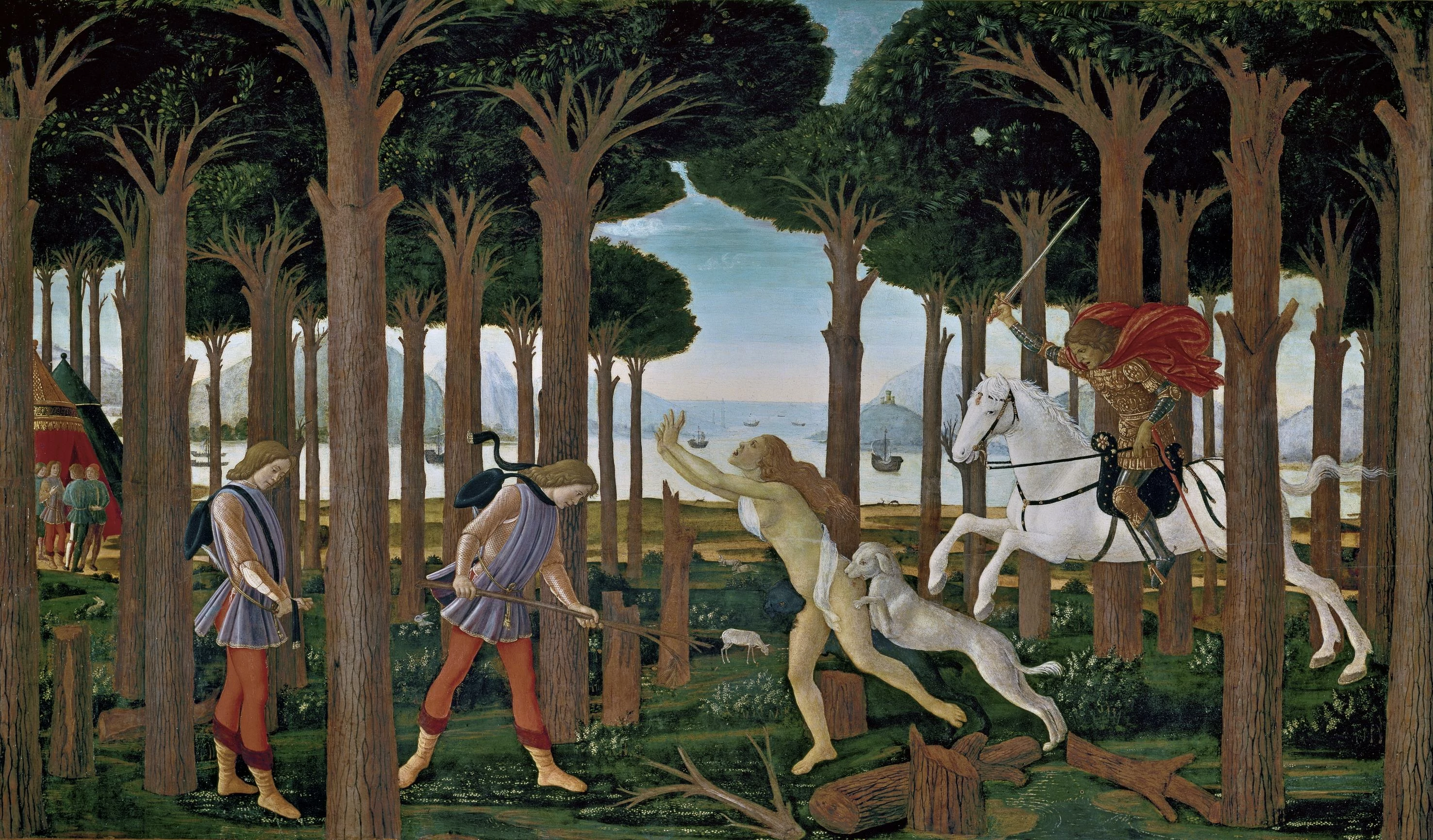Sandro Botticelli
A fulcrum between old and new


It’s strange to see Botticelli’s artwork in person. His Birth of Venus is one of the most well known paintings in history, his formal portraits are distinctively graphic and crisp, and his mythological scenes set the standard for renaissance drama and scale. But when you stand in front of a Botticelli, it’s hard not to feel a sense of unease. Something in the work is struggling with itself.
Sandro Botticelli was taught to paint by Filippo Lippi, an ex-friar who fixated on decorative motifs, draperies and brocades. As a young man Botticelli worked alongside a teenage Leonardo da Vinci in the workshop of the sculptor Andrea del Verrocchio. According to historian Giorgio Vasari’s colorful account, Botticelli quickly grew to be an extraordinarily successful painter. He painted St. Sebastian for the Basilica di Santa Maria Maggiore, and was commissioned seven different times to paint The Adoration of the Magi, a series that Vasari describes as 'a marvelous work in color, design and composition.' that displayed 'the artist’s perfect mastery of his profession'. Much of Botticelli’s success came from his relationship with Florence’s most powerful statesman, Lorenzo de’ Medici, who commissioned many works, often religious, and occasionally very personal. After Lorenzo and his brother Giuliano de’ Medici were attacked in public during an attempted coup, Botticelli painted the execution of the conspirators, as well as a memorial portrait of Giuliano, who didn't survive the attack.
It was a contentious and bloody era in Florence, but Botticelli got along fine. He refused to marry, preferring a life of independance, spent his commissions on lavish trips to Rome, experimented with engraving and printing, and played pranks on his students and neighbors. If the artist himself lived and worked without angst, what is the source of dissonance in his work? Are we imagining something that isn't there?
Here’s my theory: Botticelli worked at one of a few precise turning points in art history. Since the fall of Rome, the world had been steeped in the Medieval visual tradition. Nearly one thousand years of flattened space and gold leaf. The flat intensity of stone-eyed madonnas and sorrowful saints. Medieval art is flat flat flat. Take a minute, go back and look. From the Mughal art of Medieval India to Piero Della Francesca’s hesitant introduction of architectural perspective, paintings lived in shallow space. But within Botticelli’s own lifetime Michaelangelo, Raphael and Titian came along and blew the lid off medieval tradition with more depth and color and richness and drama than the world had ever seen.
There’s the tension. Botticelli was a fulcrum between Medieval Art and the High Renaissance. Stand in front of a Botticelli and you can feel it. He was halfway to something new. His linework is perfectly expressive, his use of color is beautiful. The people he paints feel human, vulnerable and real. But the space he paints in is shallow, with an awkwardly tight foreground and a background that feels like a theater backdrop. Botticelli never escaped the medieval tradition, but without him we'd have no high renaissance. Botticelli worked at a crossroads in history, and his work can't quite decide which way to go.
...
Got questions, comments or corrections about Sandro Botticelli? Join the conversation in our Discord, and if you enjoy content like this, consider becoming a member for exclusive essays, downloadables, and discounts in the Obelisk Store.